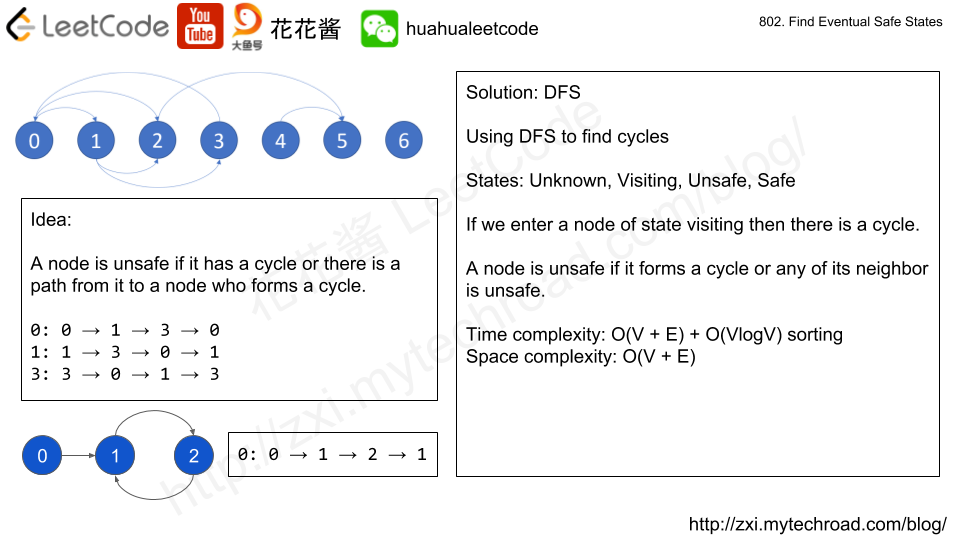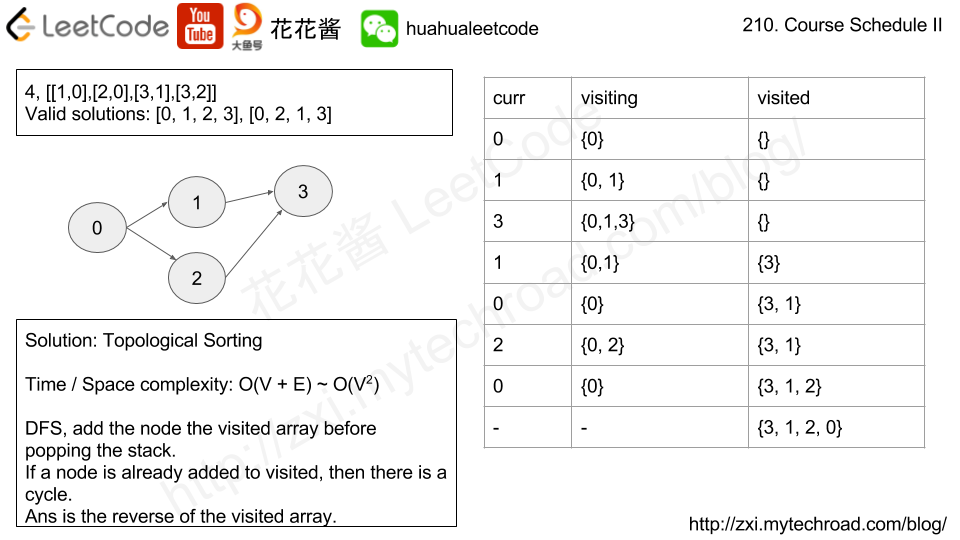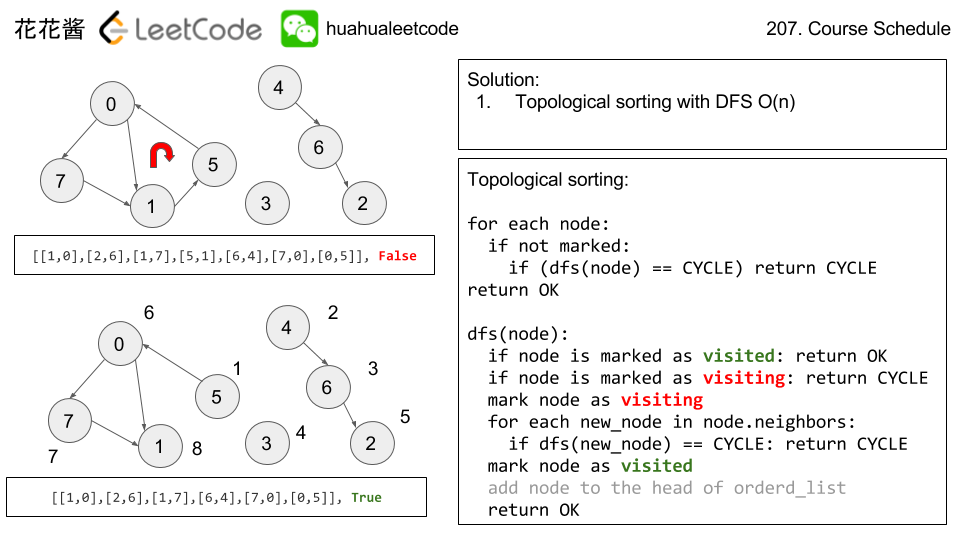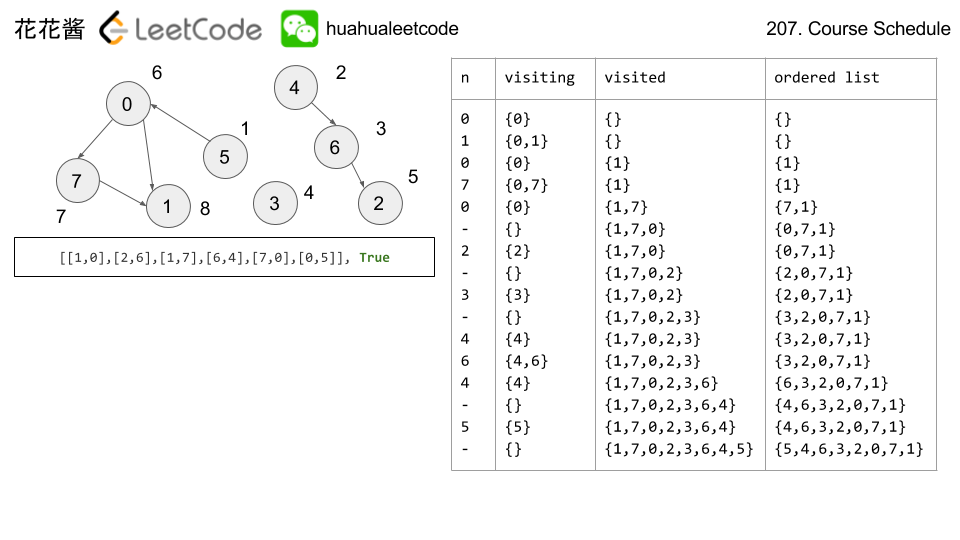Problem
https://leetcode.com/problems/find-eventual-safe-states/description/
题目大意:给一个有向图,找出所有不可能进入环的节点。
In a directed graph, we start at some node and every turn, walk along a directed edge of the graph. If we reach a node that is terminal (that is, it has no outgoing directed edges), we stop.
Now, say our starting node is eventually safe if and only if we must eventually walk to a terminal node. More specifically, there exists a natural number K so that for any choice of where to walk, we must have stopped at a terminal node in less than K steps.
Which nodes are eventually safe? Return them as an array in sorted order.
The directed graph has N nodes with labels 0, 1, ..., N-1, where N is the length of graph. The graph is given in the following form: graph[i] is a list of labels j such that (i, j) is a directed edge of the graph.
Example: Input: graph = [[1,2],[2,3],[5],[0],[5],[],[]] Output: [2,4,5,6] Here is a diagram of the above graph.

Note:
graphwill have length at most10000.- The number of edges in the graph will not exceed
32000. - Each
graph[i]will be a sorted list of different integers, chosen within the range[0, graph.length - 1].
Idea: Finding Cycles

Solution 1: DFS
A node is safe if and only if: itself and all of its neighbors do not have any cycles.
Time complexity: O(V + E)
Space complexity: O(V + E)
|
1 2 3 4 5 6 7 8 9 10 11 12 13 14 15 16 17 18 19 20 21 22 23 24 25 26 |
// Author: Huahua // Running time: 155 ms class Solution { public: vector<int> eventualSafeNodes(vector<vector<int>>& graph) { vector<State> states(graph.size(), UNKNOWN); vector<int> ans; for (int i = 0; i < graph.size(); ++i) if (dfs(graph, i, states) == SAFE) ans.push_back(i); return ans; } private: enum State {UNKNOWN, VISITING, SAFE, UNSAFE}; State dfs(const vector<vector<int>>& g, int cur, vector<State>& states) { if (states[cur] == VISITING) return states[cur] = UNSAFE; if (states[cur] != UNKNOWN) return states[cur]; states[cur] = VISITING; for (int next : g[cur]) if (dfs(g, next, states) == UNSAFE) return states[cur] = UNSAFE; return states[cur] = SAFE; } }; |



